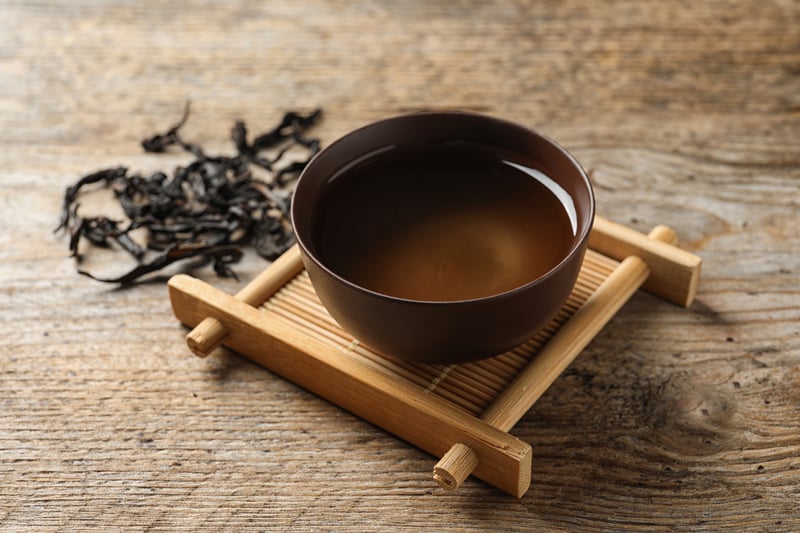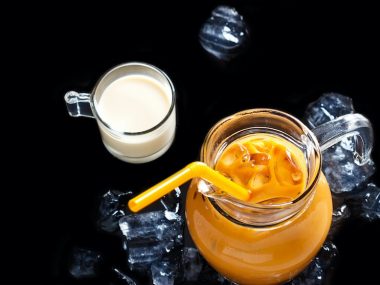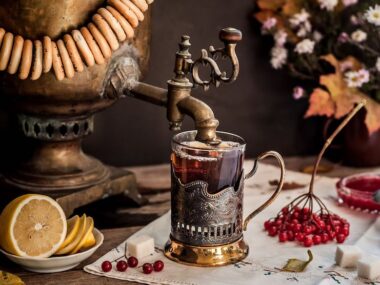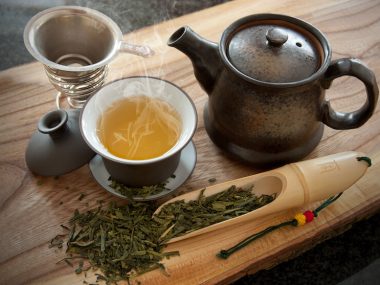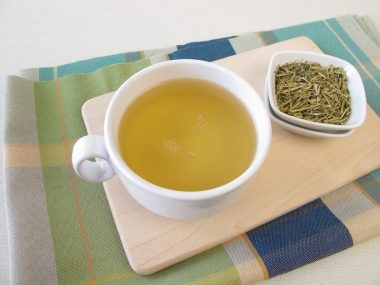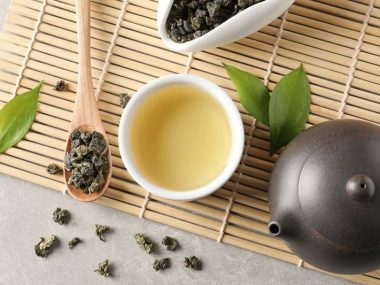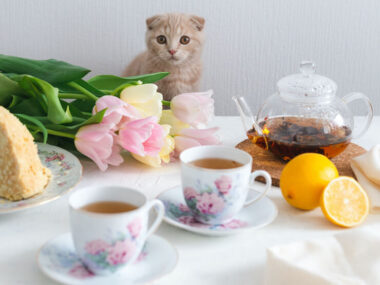Hold on to your hat because we are opening the door to one of China’s finest teas. However, behind the door are many more doors. Don’t lag behind because you’ll easily get lost in the vast amount of information.
Table of Contents
What Is Wuyi Tea?
To better understand tea with a connection to “Wuyi,” we need to unpack what those teas are. This is where things can get a bit confusing.
Black, green, or oolong tea cultivated and processed within the Wuyi Mountains or city of Wuyishan, China (Fujian Province) are referred to by many people as Wuyi tea. Unfortunately, this term is used loosely within the tea industry.
Tea traders, retailers, and so on may market this tea as such; however, those of us unfamiliar with what it may imply are left confused. Then you have those using “Wuyi tea” when referring to Wuyi wulong (oolong) or Wuyi Rock tea.
What Type Of Tea Is Wuyi Oolong?
Wulong is the Chinese name for what we know as oolong. Why westerners call it “oolong” is not entirely understood. To qualify as Wuyi oolong, the tea must be cultivated and processed within the boundaries of the Wuyi Mountains or the city of Wuyishan.
Oolong tea produced in these areas is considered premium and is one of China’s most prized teas. Many counterfeiters attempt to deceive consumers by marketing tea as Wuyi oolong through various means, which we will cover further below.
So, we have Wuyi tea which may refer to a black, green, or oolong tea grown in the Wuyi Mountains or Wuyishan. Then there’s Wuyi oolong, a premium oolong tea that comes from these areas. Now we open another door to a tea known as “Wuyi Rock” tea.
Wuyi Rock Tea
Wuyi Rock tea is a Wuyi oolong unique to a specific area within the Wuyi Mountains. This oolong tea is the creme de la creme of oolongs. Its name comes from oolong, which grows out of rocky sides of mountains and other spots in the immediate area of the Da Hong Pao (oolong) mother tree.
If we were to think of a series of three circles, it would help us to better understand Wuyi Rock tea’s classification. Chinese tea producers use different terms to grade Wuyi Rock tea. These include Da Hong Pao, Tie Lao Han, Bai Ji Guan, and Wai Shun.
There are three main types of true Wuyi rock tea (oolong) that grow in the Wuyi Mountains and the city of Wuyishan. Hold on to your bootstraps because terminology gets a bit complex at this point.
- Da Hong Pao – Also called Zheng Yan
- The center circle is where the epicenter of Wuyi Rock tea grows and where the mother plant sits. Tea grown within this epicenter is the ultimate premium true rock tea. Here you’ll find it growing out of rocky cliffs and other rocky spots (hence its name.)
- The Chinese tea traders call tea from this epicenter “Zheng Yan” (meaning rock.)
- Tie Lao Han – Also called Ban Yan
- This is the second circle just outside Da Hong Pao (the epicenter/center circle), where the soil is red.
- The Chinese tea traders call this tea “Ban Yan.”
- Bai Ji Guan – Also called Zhou Cha
- This is the third circle, which is outside the second circle where rock tea grows in yellow soil.
- The Chinese tea traders call this tea “Zhou Cha.”
- Wai Shun
- Any Wuyi oolong tea grown outside of the above three is considered not to be a true Wuyi Rock tea and is classified as Wai Shun.
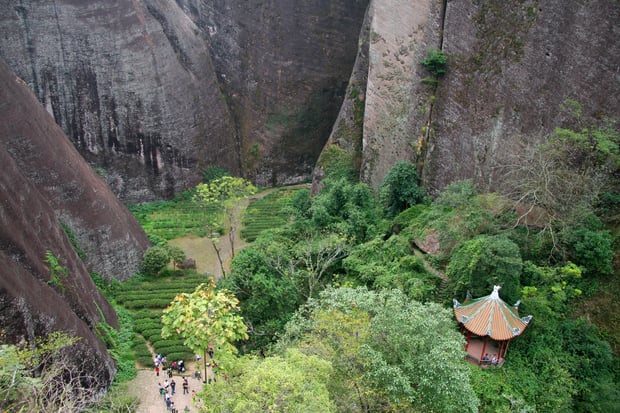
Is Wuyi Oolong The Same As Other Oolong Teas?
The main difference between Wuyi oolong and other oolongs is its origin. Wuyi oolong is only produced in a very limited area within the Wuyi Mountains. Wuyi Da Hong Pao is considered the purest among all oolongs.
So, what makes Da Hong Pao (Wuyi Rock tea) the top dog of oolongs? There are an extremely limited number of oolongs that grow within rich, active volcanic soil. The terroir (conditions) in which Wuyi Rock tea is cultivated cannot be replicated. The Rock tea from this small area takes on the deep, rich mineral essence that thrives within the soil.
You could say that Wuyi Rock tea might as well be cultivated in money (as it’s intensely rich), for it is considered rare. Should you enjoy this tea, be prepared to pay a hefty price for it.
Sourcing Da Hong Pao (Wuyi Rock Tea)
Deceitful tea counterfeiters hone in on unknowing consumers who often end up with inferior tea. One of the methods these dishonest tea producers use to get consumers to buy fake Da Hong Pao (Wuyi Rock tea) is to label it as such when it was grown in a completely different area.
They truck the fake tea into a processing plant in the Wuyi Mountains, where it is processed. That very act gets their foot in the door to say it came from Wuyi Mountains. It’s buyer beware when it comes to buying tea sold as Da Hong Pao or Wuyi Rock Tea.
Unless consumers visit the tea estates themselves, there’s no way to know you are getting the real deal.
How Is Wuyi Oolong Processed?
Wuyi oolong tea leaves are harvested and taken to the processing building, where they begin their journey to a teacup. This tea is delicately handled to preserve the integrity of the tea leaves throughout processing.
After going through withering, shaking, fixation, rolling, and drying, the tea leaves go on to be roasted. Roasting occurs under either low, moderate, or sufficient levels. These parameters deliver a diversity of tastes and aromas. Tea leaves roasted on low will have a completely different aroma and taste compared to tea roasted at higher levels.
After roasting and cooling, the tea goes on to be packaged and off to market.
What Does Wuyi Oolong Tea Taste Like?
China’s Wuyi oolong tea has one of the world’s most beautiful aromas. The Flavour Journal published an interesting research article mentioning that up to 95% of what we smell is what we taste.
With that in mind, Food Science and Technology conducted a study on how oolong tea gets its orchid-like aroma and taste. The study notes that when oolong tea leaves are disturbed during processing, the leaves begin to accumulate a volatile known as MeJA (Methyl jasmonate.)
Tea drinkers admittedly smell and taste the lovely floral essence of oolong but also claim there are woody/nutty notes. When the oolong tea leaves go through roasting, certain compounds impart a subtle woody/nutty element, dominated by the overall floral component.
Wuyi Oolong Tea Caffeine
Does Wuyi oolong tea have caffeine? True tea (black, green, oolong, yellow and white) are naturally caffeinated and may contain up to 40 mg (possibly more) of caffeine per six-ounce cup.
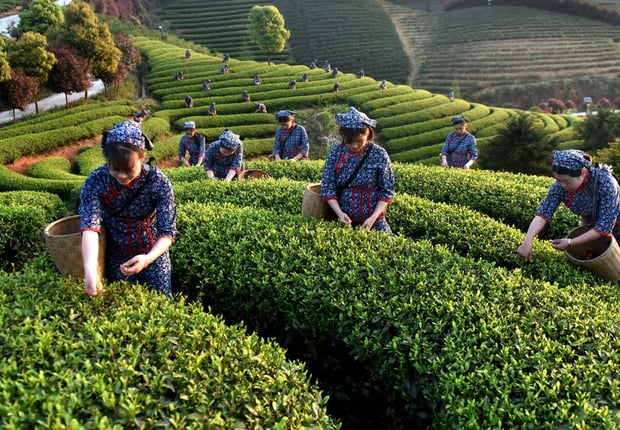
Wuyi Oolong Tea Benefits
The beauty of true tea is the beneficial constituents that promote certain aspects of our health both psychologically and physiologically.
Is Wuyi Oolong Tea Good For You?
Wuyi oolong tea has many positive things going for it. This tea exerts bioactivity as an antioxidant, anti-inflammatory, anti-bacterial, anti-obesity, anti-diabetic, anti-hypotensive, and more.
As stated in Food Science and Human Wellness Journal, oolong possesses pharmacological value by reducing oxidative stress as an antioxidant. It also acts as a preventative for heart disease, high blood pressure, allergies, and chronic inflammatory conditions. Likewise, it helps as a probiotic to keep intestinal health at its best.
Moreover, those struggling with obesity may find oolong tea beneficial in helping shed extra pounds. Oolong tea encourages metabolism to better process fat to the point it increasingly becomes expelled through feces.
How To Make Wuyi Oolong Tea
Oolong makes a lovely cup of hot or iced tea. However, to appreciate the full bloom of its aroma, a cup of hot tea provides tea drinkers a more traditional way to enjoy Wuyi oolong.
Ingredients
- 2 cups of water
- 1 teaspoon of loose leaf Wuyi oolong Da Hong Pao
Directions
- Heat the water to 195 degrees (F) (90 degrees C)
- Remove from the heat.
- Place the loose leaf tea into a tea infuser.
- Drop the tea infuser into a teapot.
- Cover and allow it to steep for about 3 minutes.
- Remove the tea infuser.
- Pour the hot tea into a teacup and enjoy.
Worthy Of Trying
There are some teas that make a lasting impression on us, and this tea is one of them. The tea unfolds as it marries with water releasing a real treat for both nose and palate. Don’t miss this tea on your tea journey!
